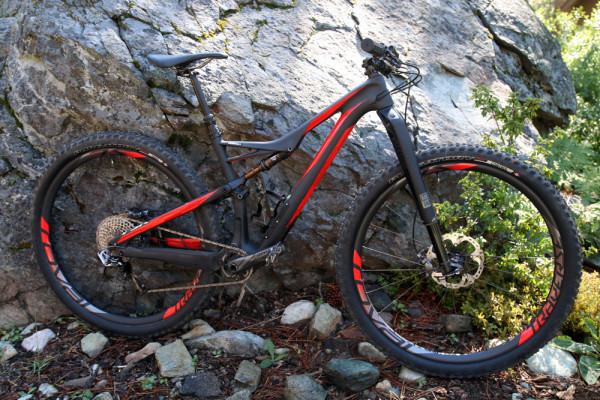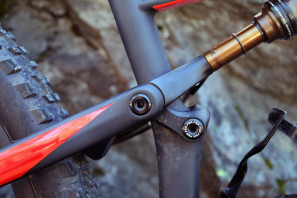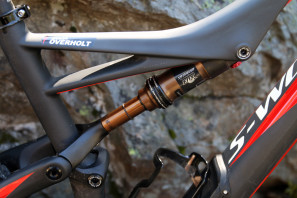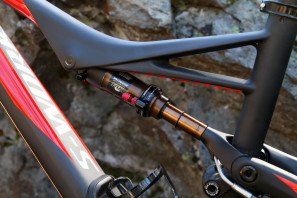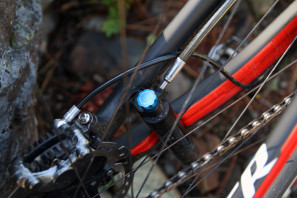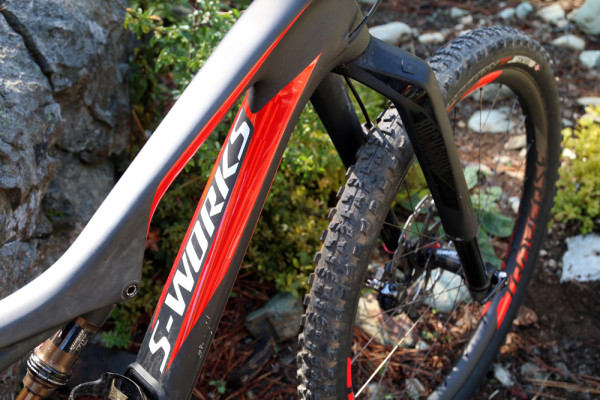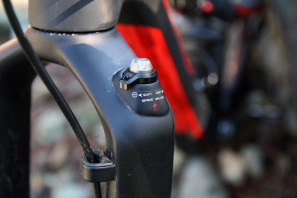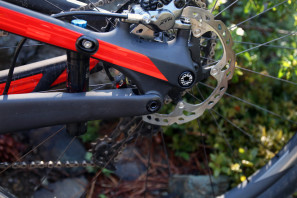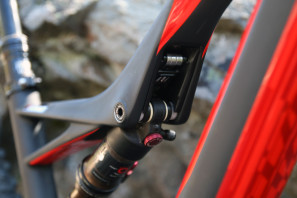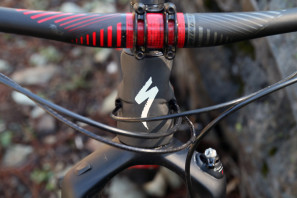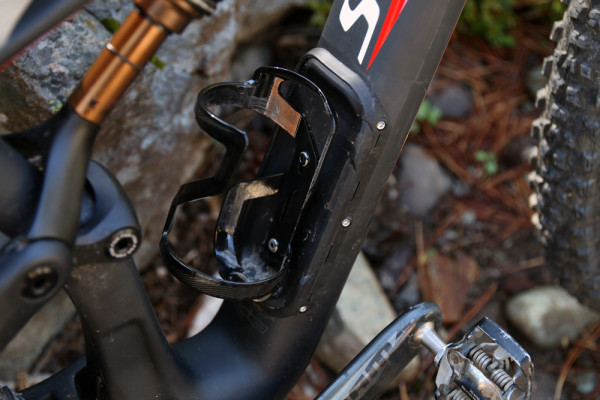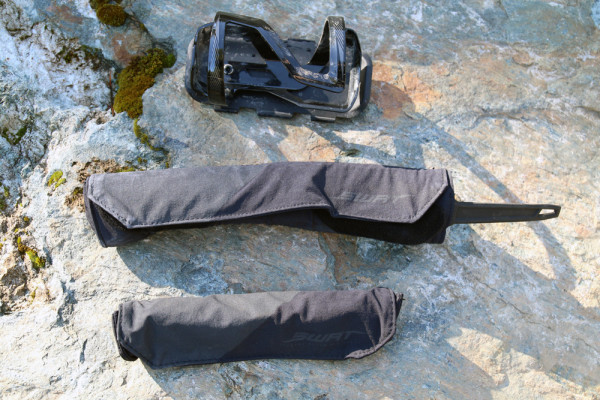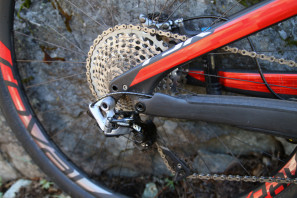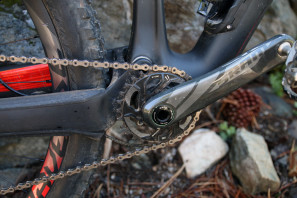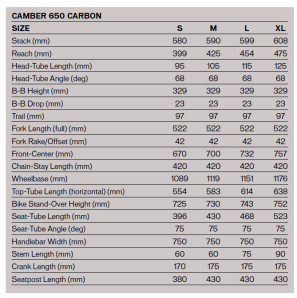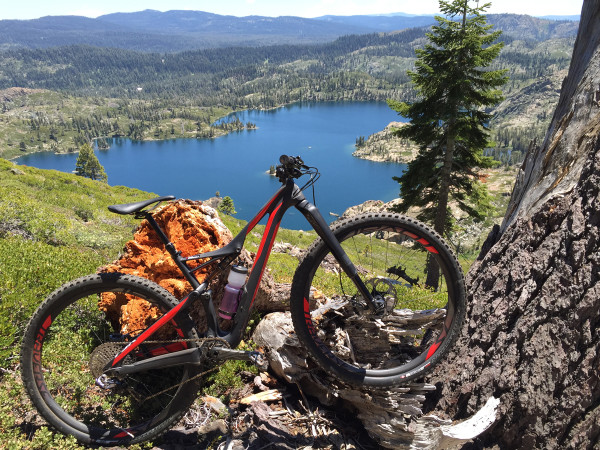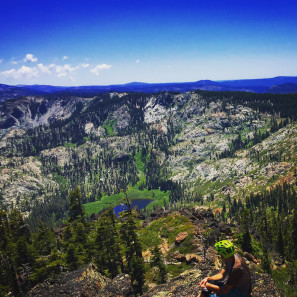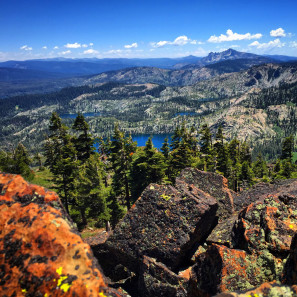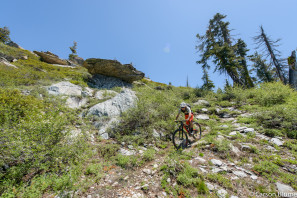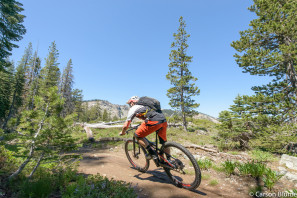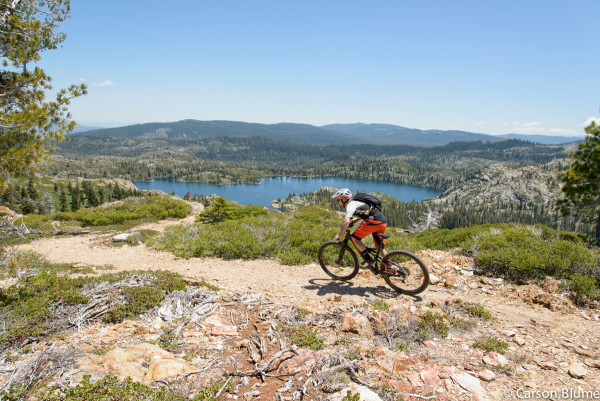
One of the raddest things about mountain biking is how the sport can be so many things to just as many different people. However, even with all of the different styles of riding most of us have the same end goal – to get out on the trail. Usually it doesn’t matter what or where that trail is, just that we get out there with enough free time to relax and take it all in.
That spirit is exactly what Specialized is hoping to capture with their new mountain bike launches. Tagging them as #destinationtrail, to Specialized this is why mountain bikes exist. Graeagle, CA was chosen to not only highlight their newest model, but also tell the story of the sport. Basically, if you think of mountain biking in an idyllic setting – this would be it.
After pedaling straight from the Gray Eagle lodge onto the trails (if you need a bike you can rent a Specialized from Howling Dogs Bike and Ski), the reasoning behind the choice of venue was instantly apparent. Just a short drive from the world famous Downieville downhill, Graeagle and the Lakes Basin area is home to a rapidly growing trail network that was a perfect backdrop to introduce the new Specialized Camber…
Just recently at the first #destinationtrail event, Specialized launched the new Stumpjumper FSR. Built to be as capable and as versatile as possible, when push comes to shove, the Stumpjumper FSR is still a big bike for most riders. Seeing the Camber as the most appropriate bike for many trail riders, Specialized opted to combine some of the new features from the Stumpy FSR with features of the Epic to create their version of the ultimate trail bike.
To Specialized, that meant the inclusion of the Brain for the rear suspension but this isn’t just a plug and play from the Epic. Instead, the Camber uses the first position-sensitive Micro Brain from specialized which doesn’t actually engage until you hit the bike’s sag point. Essentially that leaves the first 25% of the travel open for absorbing small chatter, but still provides a firm platform when pedaling hard. Calling it the first Trail Brain, the design also aids in climbing since your weight is shifted back on the bike and the inertia valve is activated. To obtain a better trail feel out of the original Brain the unit has new tuning plus a new Spike valve that is found from here on out on all Brains and even the custom RockShox RS1 for the Camber. If the shim stack can’t keep up with the oil flow during a fast hit, the Spike valve allows oil to dump at a higher speed to prevent hydraulic lock and allows faster cycling of the Brain.
Still a firm believer in active independent suspension and the FSR platform, the Brain equipped suspension package is attached to a Horst Link rear end with a new concentric linkage similar to that found on the Epic. The concentric linkage is said to create a stiffer and lighter rear end with a more connected feeling to the trail. Other similarities to the Epic include the smaller Micro Air can, Auto Sag feature, and the Inertia Valve mounted to the rear of the frame at a 16 degree angle to the trail. On the Inertia Valve itself is a dial that you can use to decrease or increase the effect of the Brain though you can’t completely shut it off.
If the front triangle looks familiar, that’s because it probably is. Calling it their FACT Carbon Trail Chassis, the front triangle is the same as that used on the Stumpjumper FSR. The fact that it was originally meant to be used for more than one bike was part of the reason Specailzied says they were able to pursue the idea of SWAT. Because of the challenges of building a frame that was just as strong and stiff with a giant hole in it, the project started with tooling they knew would likely have to be scrapped – which isn’t cheap. After starting the SWAT project in late 2011, it was finally ready for the launch of the new Stumpjumper FSR and now expands to the Camber as well.
Offering identical storage space to the Stumpy FSR, the Camber has room for the included tool wraps with a spare tube and pump, plus whatever else you can fit in side. Combined with the storage cradle for the included EMT multi tool above the shock mount, and the chain tool in the steerer, you have almost a complete flat kit hidden inside the bike. Is SWAT something you should dump your current bike for immediately? No, probably not. But I will say that once you use it, you won’t be disappointed. Over the course of three days with quite a few flats we had plenty of chances to break into the SWAT box, yet on all three of the bikes I rode not one exhibited any rattles or problems from the SWAT system. For those unfamiliar with SWAT, the water bottle cage mounts to a door that can be removed without tools. That opens up the inside of the down tube for storage which keeps the weight low and off your body.
Notable frame details include a PF30 BB shell, 142×12 rear axle, Campy Style 1.5-1.125″ tapered headset, and 30.9 seatpost. Inside the Trail Chassis you’ll find internal cable routing with molded carbon tubes to keep the cables in place with provisions for stealth dropper posts. The Camber is also front derailleur compatible across the board using the optional Taco Blade mounting plate. Not shown here, Specialized will soon have a new S-Works crank with a removable spider as well. In a nod to the trail intentions of the build, all Cambers ship with 750mm bars and 2.3″ tires with either 29mm wide Traverse aluminum or 30mm wide Roval Traverse Carbon rims.
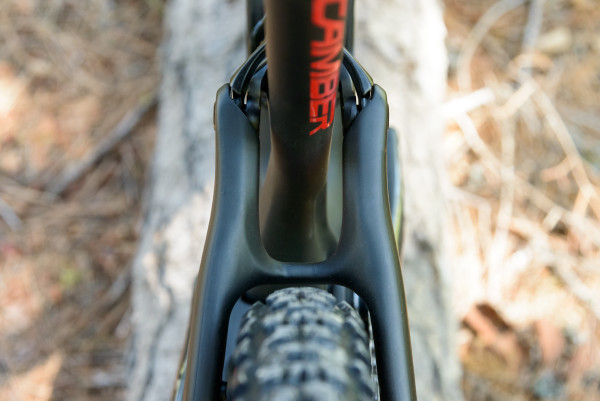
Due to the shorter travel of the Camber compared to the Stumpjumper FSR, the seatstays include a bridge between each stay for added stiffness. Sold in both 29″ (120mm travel) and 650b (130mm travel) form, the two bikes have zero shared parts with separate builds and geometries. Following the trends in geometry for both wheel sizes, the 650b Camber is a bit slacker with a 68º HTA vs the 29er’s 68.5º, 420mm vs 437mm chainstays, and a 330mm BB height for both. Designed with a short rear end, low BB, and roomy top tube the Camber fits into what is becoming common trail geometry which results in a fun, fast bike. Of note to Specialized geometry as a whole is the absence of Evo and standard geometry – going forward everything is essentially the old Evo geometry.
Available in four sizes and in carbon or aluminum, all of the carbon models including the Carbon S-Works, Expert Carbon Elite Carbon, and Comp Carbon will ship 1x with either a 28 or 32t ring. The Comp Alloy and Camber will use aluminum frames without SWAT and ship 2×9 or 2×10. All of the carbon models will also include the new Specialized Command Post IRcc with Cruiser Control which is still a pre-set height seat post, but one that offers 10 different middle positions to make it easier to find the right height. The Camber Comp Carbon also serves as the cut off point for the new Trail Brain with all other bikes receiving a custom rear shock with a different yoke.
Pricing:
- SW Camber FSR Carbon 29 – $9800
- SW Camber FSR Carbon 29 Module – $7300 (frame, fork & wheels)
- SW Camber FSR Carbon 650b – $9800
- SW Carbon FSR 650b Module – $7300 (frame, fork & wheels)
- Camber FSR Expert Carbon 29 – $6200
- Camber FSR Expert Carbon 650b – $6200
- Camber FSR Comp Carbon 29 – $3800
- Camber FSR Comp Carbon 650b – $3800
- Camber FSR Comp 29 – $2500
- Camber FSR Comp 650b – $2500
- Camber FSR 29 – $1850
- Camber FSR 650b – $1850
- Camber FSR GROM – $2200
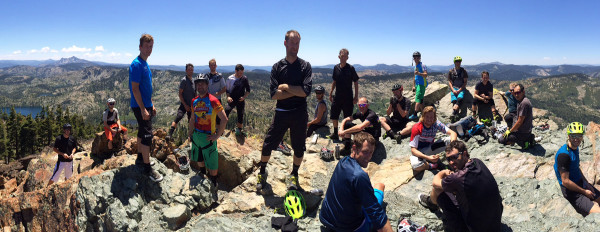
First Impressions:
Due to a limited number of bikes, I was only able to ride the Camber for a single ride but it just so happened to be the longest ride of the week so I came away with a solid test for a first impression. Riding a medium Camber 29 for the Mt. Elwell ride, I’ll admit I was happy to have one of the lightest bikes there for the brutal climbs and hike a bike sections.
If you’re looking for the Cliff’s Notes version, to me the Camber seems like the perfect trail bike for the rider coming off an Epic. Anyone looking for a bike that is close the the razor’s edge pedal efficiency of the Epic with a bit more all around performance, the Camber is almost exactly that. While the Brain seems to work as advertised, the point that the Inertia Valve engages is noticeable and to riders that aren’t used to the Brain, it may be a bit unsettling. After awhile you start to get used to the feeling though and you forget everything as you crack the throttle for some wide open downhill fun. While I was happy to be on a Stumpjumper FSR for Downieville, the Camber isn’t far behind in terms of grin-factor.
One of the parts that deserves the most praise is the Specialized Command Post IRcc. I’ve never been a fan of pre-set position dropper posts, but the Command Post manages to hide the fact with so many positions in the middle of the travel. Combine that with the perfect SRL lever (as long as you’re running 1x), and you have a dropper that is supremely easy to use.
Photo c. Carson Blume/Specialized
While I think it had more to do with the trail than the bike, the only time I flatted the entire trip was on the ripping downhill from Mt. Elwell on the Camber. With a Grid casing out back, it was the Control casing front tire that suffered a cruel death at the hands of a sharp rock with a big slash on the sidewall. The trail was pretty rugged with lots of sharp rocks though, so I can’t really blame the tires. It was at that point that the tube and pump in my bike’s downtube (as well as a packet of GU) came in handy, and kept me rolling.
Compared to the previous generation, the new Camber is a completely different animal. It’s faster, it climbs like a rocket, it seems to be more capable, and with SWAT it’s certainly more versatile. Ultimately, I think the deciding factor for most riders will come down to the Brain. In terms of making a bike that climbs and pedals as well as many XC bikes, the Trail Brain does exactly what it’s supposed to – and it still rips down with the best of ’em. If you’re looking for a super efficient ride that is still able to be rallied down your local trails, the Camber is worth a spin.
